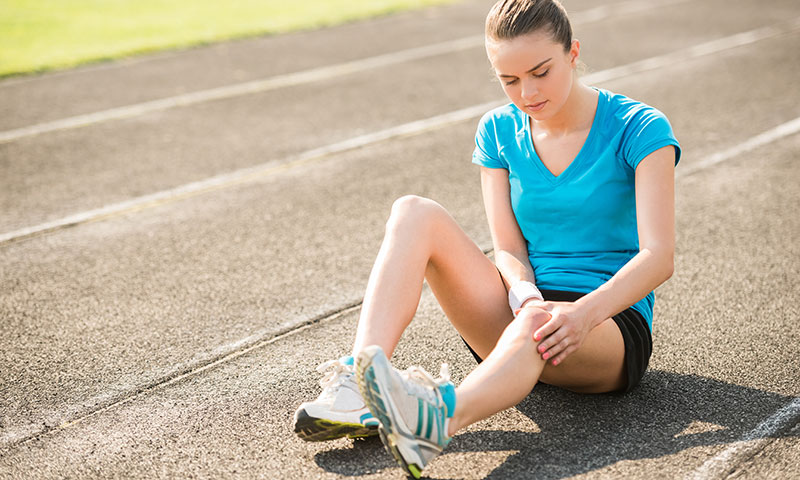Even if you’re a long-time runner or just starting out, experiencing sore muscles after a run is normal. But something more serious could happen if you are experiencing knee pain after running. Visit Specialty Care Clinics for proper orthopaedic care.
Patellofemoral syndrome or runner’s knee is the most common type of knee pain in runners. The pain is located nearly always in the centre of the front of the knee. This pain can result from the kneecap not tracking correctly over the thigh bone or from not getting enough rest between runs. If the muscles around the kneecap are weak or tight, it can also cause a runner’s knee.
Calf muscles and tight hamstrings both cross the knee joint in the back. Runners are very well known for having tight hamstrings, therefore focusing on flexibility can help with knee pain.
Pain below the kneecap is likely because of repetitive stress on your knee from running. Over time, this stress could cause patellar tendonitis. Physiologically, this is the inflammatory cells in your body which become overactive in certain places.

Even if it is less common, knee bursitis can also be caused by excessive pressure on the knees while running. Small, fluid-filled sacs, called bursa, are situated near joints and can become inflamed, resulting in pain. In runners, this would more often be pes anserine bursitis, which is on the inside of the knee but further down between the shinbone and three tendons of the hamstring muscle inside of the knee.
If you experience pain outside your kneecap, iliotibial (IT) band syndrome is likely to blame. The IT band is a stretch of fibers that runs from the hip to the knee on the outer side of the leg and is supported by the bursa to function steadily. Hip abduction is needed for any activity that includes one of your feet being off the ground. Hip abductors keep the pelvis relatively straight when the opposite foot is off the ground during walking or running. The IT band helps with this, which helps explain why it becomes tight.
For the IT band to stretch, your knee needs to cross the midline of your body. This rarely happens in straight-line running, so all it gets to do is contract again and again.
Proper strengthening and stretching of the glutes and quadriceps can help prevent the development of IT band syndrome. Runners are known for their tight ITB structures, so they tend to stretch their glutes. Focusing on and growing and strengthening your ITB is a good insurance policy. Maintaining hamstring strength is another easy way to keep your knees strong.

If you experience pain and stiffness in your knees during daily activities, not just running, you may have osteoarthritis, especially if you’re over the age of 50. Osteoarthritis becomes more common with age and It can occur in your knee whether you run or not. There is no cure for osteoarthritis, but physical therapy and anti-inflammatory medications can help reduce pain, and regular exercise can keep it at bay.
Proper warm-up and cool-down and step-by-step building of endurance should be done to prevent knee pain while running. Do not increase distance or intensity by more than 10% per week. This slow, steady increase helps your body adjust to your workout without risking injury.
If you notice knee pain after running and rest, ice, and over-the-counter anti-inflammatory medications don’t help, you should think of making an appointment with an orthopaedic doctor.
Visit Specialty Care Clinics for the best orthopaedic care in Texas. To book an appointment for orthopaedic treatment, call (469) 545-9983.
